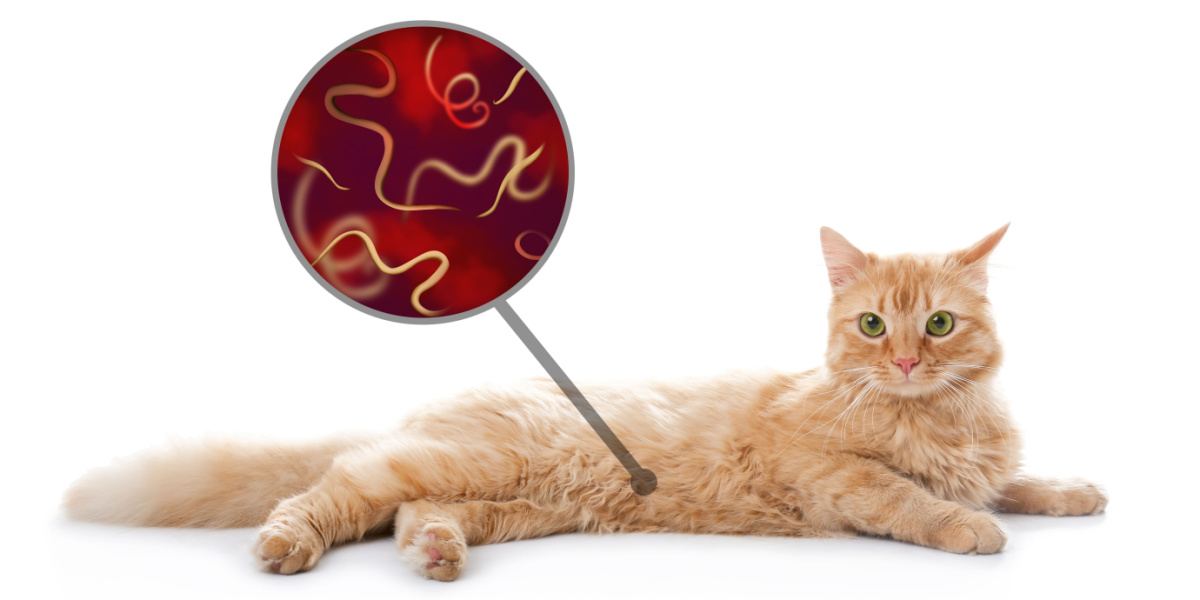
Worms, unfortunately, are an inevitable part of your cat’s life. A small worm burden in a cat might not cause too much harm, but as the worms grow or reproduce, and the worm burden increases, they can have extremely detrimental effects, including severe illness and even death.
Deworming and using parasite preventives is important for your cat, not only for their health but that of other animals and yourself and your family. Some worms are what we call zoonotic, which means they can be readily passed from cat to human.
Let’s take a deep dive into worms that affect our cats.
1. Roundworms

Roundworms are commonly passed from to nursing kittens from the mother cat.
Roundworms (Toxocara cati, Toxascaris leonina) are very common in cats. They get their name from the distinctive shape of their bodies. They are long and circular, with two pointed ends. Their eggs are microscopic, so are unable to be seen by the naked eye. The worm dwells in your cat’s intestines and the eggs are passed out in the feces.
Roundworm larvae can be passed from the mother to the kittens when they nurse from the queen. Lots of types of small mammals and birds can be infected with roundworm larvae. These types of animals tend to be the typical prey for cats, therefore when the cat eats the prey, they become infected.
Another way cats get infected, or reinfected, is when they pass out worm eggs in their feces in their litter box, and it hasn’t been cleaned out properly. The cat will transfer eggs from their paws into their mouths when they groom themselves so litter tray hygiene is of utmost importance.
Also Read: Cat Intestinal Parasites: Causes, Symptoms, & Treatment
2. Tapeworms
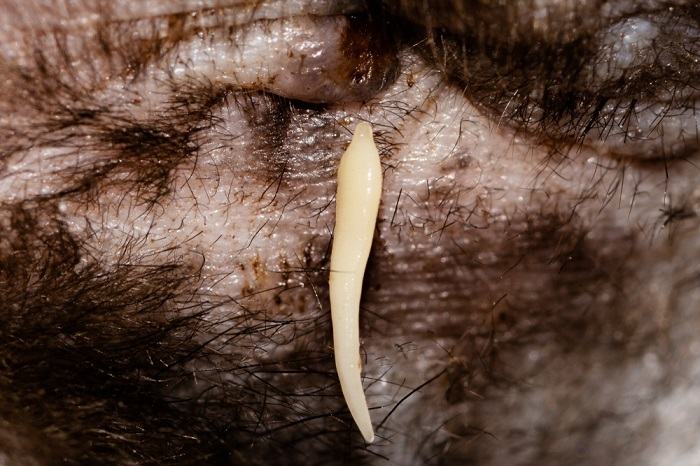
Tapeworms can be seen with the naked eye when they are passed through the feces.
Most pet owners will have heard of tapeworms (Dipylidium caninum, Taenia taeniaeformis) and possibly have seen them as well. Tapeworms latch onto the inside of the intestinal wall and develop long bodies with distinctive segments. The end of the worm is where the egg sack is.
This breaks off and is shed out of the cat’s butt. It is these segments that resemble little grains of rice, which owners usually see in the cat’s poop or fecal material stuck to their fur. Tapeworms have an intermediate host in their lifecycle, which aids greatly in their ability to get established in your cat. Cats get tapeworms when they swallow a flea or ingest a small mammal host.
Also Read: Why Is My Cat Thin At The Back End?
3. Hookworms
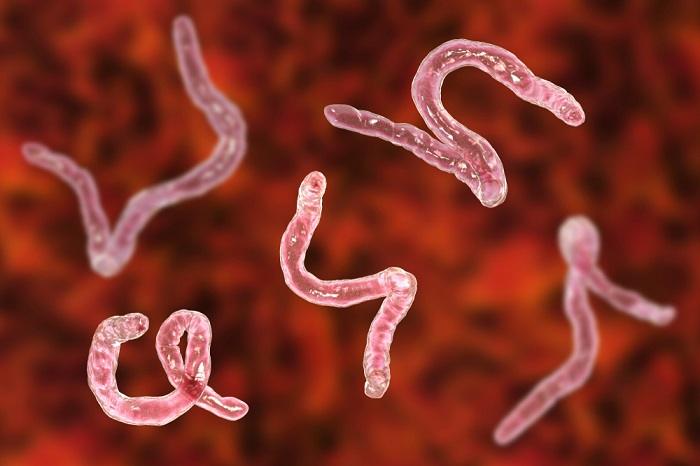
In kittens especially, hookworms can cause severe anemia and diarrhea.
Hookworms (Ancylostoma spp, Uncinaria stenocephala) are smaller worms that latch onto the intestinal lining and suck the cat’s blood. They can cause severe anemia and diarrhea, especially in young kittens or immunosuppressed cats. Hookworms pose a zoonotic risk to humans too as the larvae can enter our skin.
Also Read: The 9 Best Cat Foods For Diarrhea
4. Heartworm
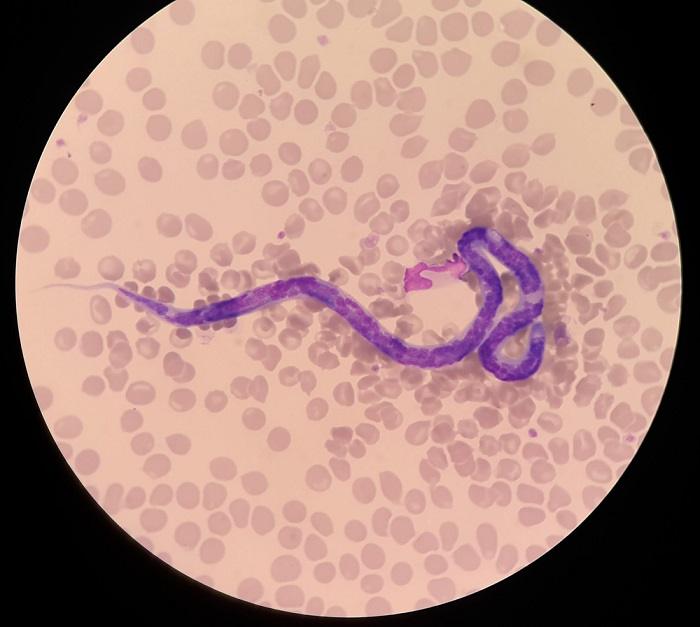
There is no treatment for heartworm in cats, so using a heartworm preventive is extremely important.
Heartworms are extremely dangerous for cats. Cats get infected from the bite of an infected mosquito. The worm burden is usually only very low in a cat, but it only takes one or two to cause serious problems. Heartworm disease can cause sudden death in cats. A big downside for cats is that heartworm treatment is not suitable for them, so prevention is key.
Also Read: 10 Most Dangerous Diseases In Cats
5. Whipworms
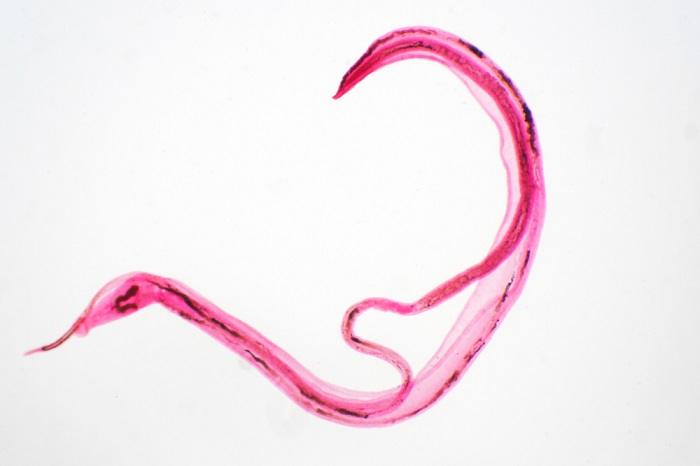
Whipworms are named for their whip-like shape.
Whipworms (Trichuris vulpis, Trichuris serrata) are less common in cats than some of the other worms. They get their name from their characteristic shape, which is literally like a whip. Cats become infected by ingestion of any substance contaminated with the larvae or eggs of the whipworm. This includes contaminated soil, food, water, and other animal flesh or feces. Whipworms reside in the intestines of cats.
Also Read: Cat Digestive System: Anatomy, Diseases, & Treatment
6. Stomach Worms
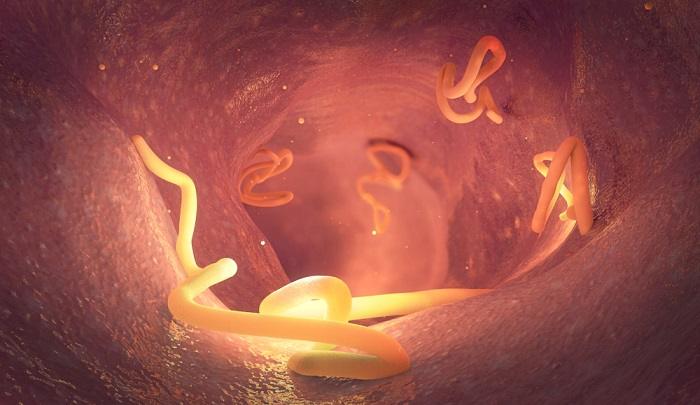
Stomach worms are passed to other cats through the vomit of an infected cat.
Stomach worms (Ollanulus tricuspis, Physaloptera spp) are most commonly seen in outdoor cats and cats living in multi-cat households. They are usually spread through contact with the vomit of an infected cat. Some cats might show no symptoms at all; others vomit intermittently and will gradually lose weight.
Also Read: Stomach Cancer In Cats: Causes, Symptoms & Treatment
7. Lungworms
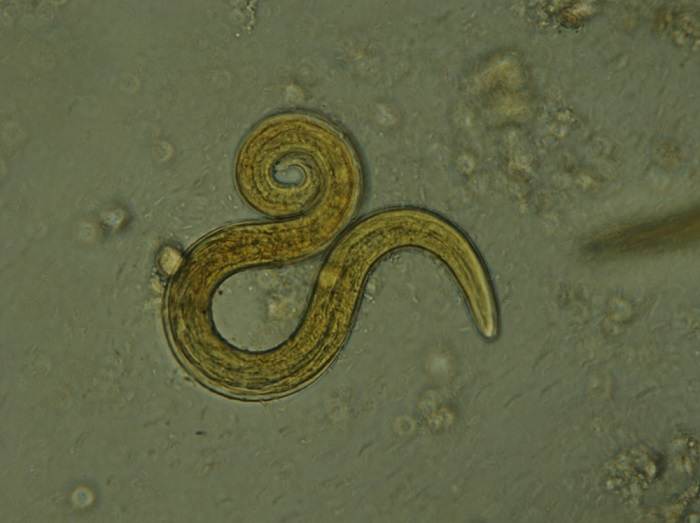
Lungworms start out in a cat’s intestines, but eventually make their way to the lungs.
Infection with lungworms (Aelurostrongylus abstrusus, Capillaria aerophila) occurs when cats eat or drink something that has been contaminated with the larval stage of the worm. The larvae move out of the intestines and find their way to the lungs by traveling in the bloodstream. In the lungs, they develop into adult worms and lay eggs. The eggs either get coughed up or passed out in the cat’s feces and they continue to get spread around.
Also Read: Lung Cancer in Cats: Causes, Symptoms & Treatment
8. Liver Flukes

Liver flukes affect a cat’s liver, bile apparatus, and the small intestines.
Cats usually pick up liver flukes (Opisthorchis felineus) from a secondary host. A secondary host is one that consumes the intermediate host and then is usually consumed by the cat. The cat liver fluke dwells in water such as lakes or ponds. They prefer warmer climates. An infestation in the cat usually affects the liver, the bile apparatus, and the small intestines.
Also Read: Liver Failure In Cats: Causes, Symptoms, & Treatment
9. Bladder Worms
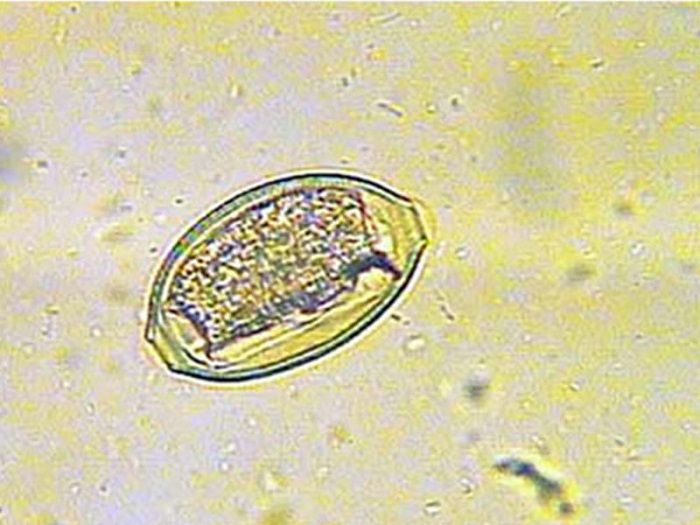
Though rare in cats, bladder worms might cause symptoms similar to a bladder infection. Image Credit
Bladder worms (Pearsonema feliscati, Capillaria plica) are relatively rare in cats. They also rarely cause clinical signs so it does prove difficult to detect them. If there is a large worm burden cats may show signs of a classic urinary tract infection. They are passed out during urination.
Also Read: Bladder Stones In Cats: Causes, Symptoms & Treatment
10. Eye Worms
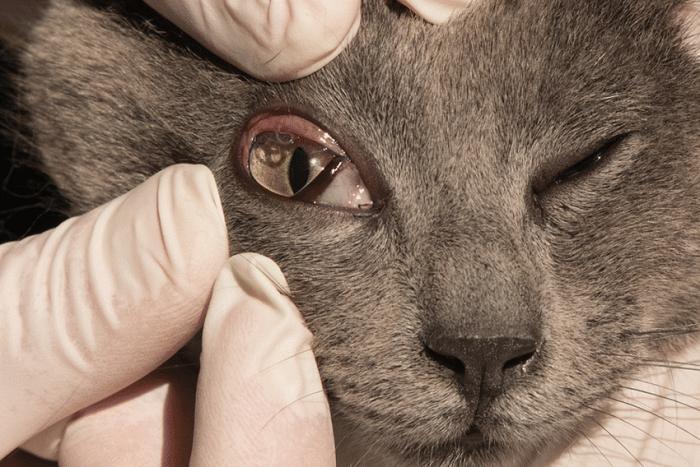
Eye worms can cause blindness in severe cases. Image Credit
Eye worms (Thelazia callipaeda) are a few millimeters to a centimeter long and move across the surface of the eye as a snake would across the ground. There are often hundreds in the conjunctiva and conjunctival sac if an infestation occurs. Flies are usually the intermediate host—they deposit the larvae on the eyeball when they land on the cat.
Symptoms include watery eyes that are extremely itchy, inflamed conjunctiva, and occasionally in very bad cases, blindness. Treatment usually involves physically removing them, which is done under heavy sedation or general anesthetic.
Also Read: Cat Eye Infections: Causes, Symptoms, & Treatment
10 Common Types of Worms in Cats

How To Tell if Your Cat Has Worms

Cats with parasite infections might have no symptoms or serious ones.
The symptoms of worms displayed by your cat will vary largely depending on what type of worm they have on board. Cats can be completely asymptomatic or have symptoms severe enough to the point of being life-threatening. The most common signs are listed below. These are generally associated with intestinal worms as these are more frequently seen.
- Diarrhea or changes in fecal consistency
- Blood in feces
- Vomiting
- Loss of appetite
- Weight loss
- Potbellied appearance
- Poor body condition and dull coat
- Skin problems
- Weakness/collapse
- Pale mucous membranes
- Dehydration
- Seeing worms in cat’s feces or vomit
It goes without saying, if you are witnessing any of these symptoms in your cat, seek veterinary attention immediately.
Also Read: 10 Subtle Signs Your Cat May Be Sick
Treatment for Worms

Different worms require different medications to eradicate them.
It is always recommended to go to your vet for advice on worming products. You might be able to buy some medications over the counter at drug stores, but the best products on the market are the ones prescribed by your vet. It is so important to keep up to date with worming treatment, for you and your cat. Some of the worms mentioned are extremely common.
Roundworms can be passed through the mother’s milk from queen to kitten, so the safest thing is to assume all kittens are infected and require regular worming from a young age. This means starting treatment at 3 weeks of age and continuing every two weeks until the kittens are 8 weeks old. They should then be wormed monthly until they are 6 months old.
Treatment of adult cats depends on their lifestyle. If they go out and hunt a lot it is recommended to worm them every month, if they stay indoors and don’t interact with other animals or hunt, every three months is sufficient.
Tapeworms usually only affect older cats, unless you have a cat with a large flea burden. All it takes is one infected flea to cause a worm infestation alongside a flea infestation. Adult cats that don’t go outside or hunt should be treated every three months and cats that are avid explorers and hunters should be treated every month.
If your cat has fleas, it’s important to use a product that is active against dipylidium caninum, which is a type of tapeworm spread by fleas. Your veterinarian will know which one to prescribe.
Also Read: 5 Best Cat Dewormers
Worms in Cats: Final Thoughts
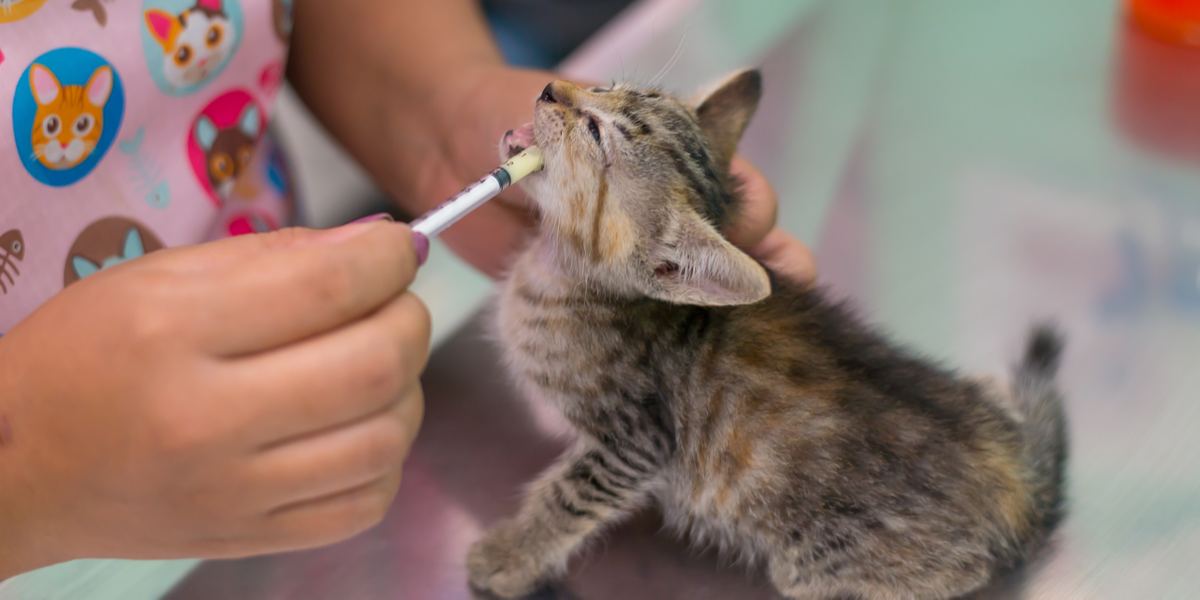
Kittens need regular deworming; your vet will usually do this when your kitten gets their booster shots.
Being a cat owner means that you will come across worms at some point in your cat’s life. If you aren’t proactive with worm treatment for your cat, it can quickly become a very serious health issue. There are very good worming products available that work very quickly and effectively to rid your cat of worms.
Keeping cats indoors and only feeding them cooked food (not raw) will aid in the prevention of a worm infestation. Flea prevention also plays an important role. It is always good practice to worm your cat regularly whatever their circumstances.
Also Read: How To Clean A Cat’s Butt In 6 Simple Steps
Frequently Asked Questions
What are the most common worms for cats?
Roundworms are the most common intestinal parasite to affect our cats, with hookworms, whipworms, and tapeworms close behind.
How do I know what kind of worms my cat has?
Some of the worms are easy to identify. For example, roundworms have the appearance of spaghetti, and tapeworm segments look like dried-up grains of rice. Hookworms have a similar body to the roundworm, but they have a distinctive hooked shape. Your vet will be able to advise you on the type of infection so you know what you’re dealing with.
Are worms painful for cats?
A worm burden can be painful for cats. The worms move around the body by migrating through tissues, this causes a local inflammation reaction, which causes pain. Fluid accumulation due to loss of protein through the gut causes a pot-bellied abdomen, which is extremely uncomfortable, too.







